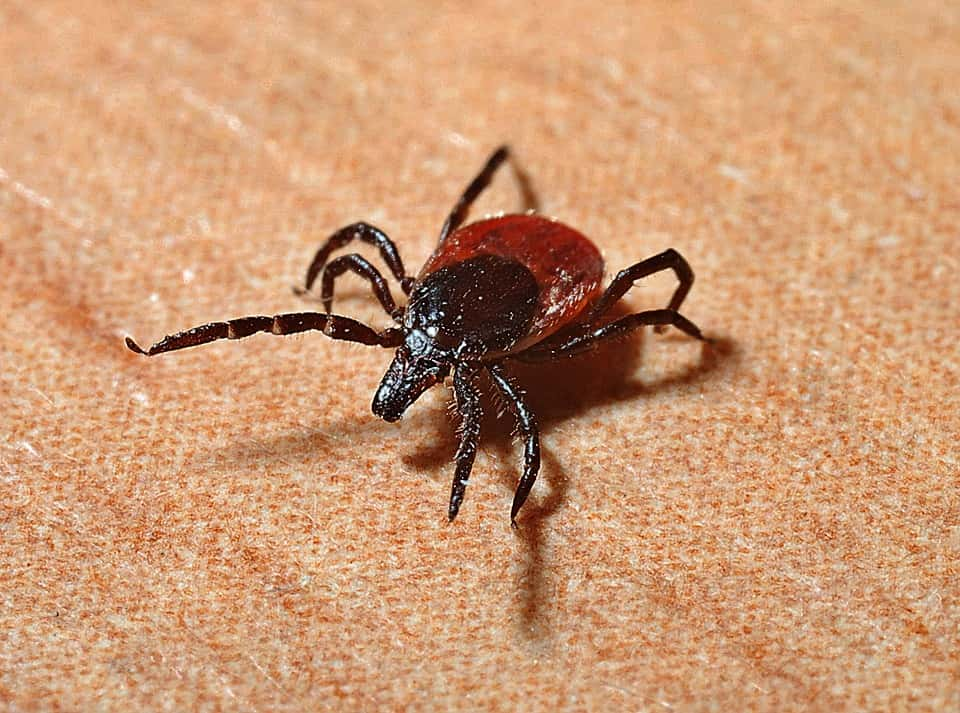Paradoxically, Lyme disease is something very, very old, yet also something relatively new. When researchers performed an autopsy on Ötzi the Iceman, the 5,300-year-old mummified man found in the Alps, they discovered evidence that he suffered from Lyme disease at the time of his death. Yet, unlike so many other diseases, there is next to no mention of the infection in historical sources. For millennia, people didn’t even know that Lyme disease existed, let alone what caused it.
Under the Radar
In fact, the first detailed mention of Lyme disease occurred in 1764—relatively recently, considering we’ve got proof it was around for at least 5,000 years before that. Reverend John Walker wrote of a visit to Deer Island, off of Scotland, where he described a painful affliction that matched the symptoms of Lyme disease and was spread by a “worm” that “penetrates the skin.”
Maybe it’s not surprising that this brief description of a vague disease spread by “worms” in the 18th century didn’t lead to a widespread medical breakthrough. It would be another century before a German doctor named Buchwald would first describe the skin rash that's most commonly associated with Lyme disease. Even then, it wasn't actually recognized as a condition until the 70s, and its cause wasn’t identified until 1981.
Thanks, Mom
We can thank a couple of concerned mothers from the town of Lyme, Connecticut, for our knowledge of Lyme disease. It was the early 70s, and many children in this small hamlet were suffering from strange health problems. They had skin rashes, headaches, swollen knees, and severe chronic fatigue. Nearly all of them had also been recently bitten by ticks.
Doctors failed to diagnose and treat these children, so two Lyme mothers began to take matters into their own hands. They started taking detailed notes, and contacted scientists themselves. Their persistence paid off and eventually, researchers connected the dots and determined that this mysterious outbreak had been spread by those tick bites.
Finally, in 1981, a scientist named Willy Burgdorfer studied a large collection of ticks from an area where Lyme disease infections were common. He found microscopic, spring-shaped bacteria called spirochetes in 60% of the ticks he examined. Soon after, he managed to find those same bacteria in Lyme patients. Finally, we had an answer. In Burgdorfer’s honor, the bacteria he discovered was named Borrelia burgdorferi.
The mystery was solved, so what did we learn? What causes Lyme disease? Today, most people at least know that ticks are involved—which is probably what makes the disease so horrifying to many—but how does it actually work? And, more importantly, what happens when you get it?
Lyme Time
Thanks to Burgdorfer, we know spirochetes are the culprit. These bacteria usually live in small mammals and birds, but when those creatures get bitten by a tick, the spirochetes hop on for a ride. The ticks need nice warm blood to survive, and they’re not picky about where they get it. After munching on a rat or a bird, they might jump onto you or your pet and tuck in yet again. The spirochetes then make the jump into your bloodstream, and boom, you’ve got Lyme disease. You can blame the tick, or the spirochetes, or even the wild animals they came from, but in the end, it doesn’t matter. The question is: what happens next?
One of the reasons we knew so little about Lyme disease for so long is that it doesn’t present itself in any simple, or straightforward way. Symptoms can vary wildly across patients, and it can closely mimic many other infections.
Even more frustrating, blood tests for Lyme disease often come up negative in the early stages of infection, meaning it can be very easy to miss. So, how can we identify this slippery condition?

Sign up to our newsletter.
History’s most fascinating stories and darkest secrets, delivered to your inbox daily. Making distraction rewarding since 2017.
What to Expect When You're Expecting...Lyme Disease
The most common indication of Lyme disease is a rash called erythema chronicum migrans. It often appears in a telltale “bullseye” pattern, and initially appears at the site of the tick bite. It is often stark shade red, and might feel warm to the touch, but it doesn’t generally hurt too much.
The localized rash is the earliest indication of Lyme disease, but after weeks, similar rashes might start popping up in places nowhere near the initial bite. This occurs when spirochetes have gotten into the bloodstream and have begun to spread throughout the body. This is also the point where more serious symptoms, like meningitis or facial palsy, can occur.
If Lyme disease remains untreated for months or years after these two initial stages, it can progress to the point where it may cause chronic arthritis or more serious neurological or cardiac symptoms.
Lyme disease is already disturbing enough because of its tick-born nature, but it's also one of the fastest growing infections in the United States today. As populations spread out into the suburbs and come into more frequent contact with the ticks’ habitat, instances of Lyme disease are on the rise, and there are more than 300,000 new cases reported in the US each year.
It's Not All Bad News
All this makes Lyme disease seem like some horrific pestilence out of a horror novel—but thankfully, the scary stuff about this illness pretty much ends there. Lyme disease is extremely easy to treat, and early diagnosis makes treatment with antibiotics like penicillin almost 100 percent effective. In some very rare cases, patients can experience continued symptoms after treatment, but these tend to go away after a few months.
Even in cases where Lyme disease is allowed progress, it very, very rarely fatal. Between 1985 and 2008, the Center for Disease Control and Prevention reported only three deaths related to Lyme disease.
So while the idea of a strange, bacterial infection caused by tick bites might seem terrifying, Lyme disease is not something that should be a cause of too much concern. There are many truly dangerous diseases out there that have plagued humanity for millennia, and that people have written about since ancient times. Lyme disease is not one of those. Especially today, when we know so much and treatment is so simple, it’s extremely low on the list of medical concerns. Does that mean I won't scream in horror if I see a tick latched onto my leg? Not a chance—but at least my horror won't be because of Lyme disease.















